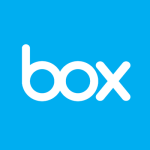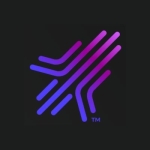A caveat before we start: This post is referring to the current
release of SharePoint – SharePoint 2013. If you are using SharePoint
2010 or older versions and want to introduce enterprise social
networking (ESN) tools, your decision is more straightforward. Use
Yammer or an equivalent product such as Jive or Newsgator, or do without
until you upgrade.
Here’s the summary:
For organisations already using SharePoint 2013 for content management who want to leverage social networking features…
| Use Yammer when: |
Use SharePoint when: |
- You want to use the superior social networking technology
- You want a social network spreading beyond your organisation
- There isn’t a good reason not to
|
- You want to avoid confusing users with multiple user interfaces
- You want to minimise identity management overheads
- You have compliance needs that SharePoint meets but Yammer does not
- You want an ‘on-premise only’ solution (and don’t want to use additional products)
|
Read on for the long version:
Do we have to use Yammer now instead of SharePoint for social activities and news feeds?
It’s a question I have been asked by many clients and event attendees
who have invested in using SharePoint 2013 and/or Office 365 since the
beginning of the year. The confusion has been caused by Microsoft
seeming to be more in love with Yammer than SharePoint of late:
“In my customer meetings over the last few months, people
have often asked, “What should I use for social? Yammer or the
SharePoint newsfeed?” My answer has been clear: Go Yammer!”
- Jared Spataro, Director, Microsoft SharePoint Product Group1
“OneNote, Yammer, SkyDrive are growth drivers for Office”
- Kurt Delbene, President, Microsoft Office Division2
So the advice from Microsoft is pretty clear. If at all possible, choose Yammer.
There is also a specific reason for choosing Yammer over SharePoint:
- You want to invite people into the network who are not licensed SharePoint/Office 365 users.
i.e. you want your social network to spread beyond the organisation.
You can invite external users to participate in content within
SharePoint, but they don’t get a profile or any level of personalisation
features. They just get access to the content. Yammer gives every
participant a profile and personalisation such as an activity stream of
who and what you are following.
But there are reasons to not use Yammer, at least for now if you are using Office 365:
- Do not want the overhead of maintaining an additional set of users accounts
- Want enterprise search and Office integration
- Regulatory issues with using the service
Whilst Yammer is included for free within an Office 365 Enterprise
plan subscription, it still has its own separate user identities. There
is integration thanks to federated sign-on: logging in to one will also
log you in to the other. But it’s still two separate identities to
maintain which adds to IT overheads. This is due to be resolved in the
Autumn.
The social features within SharePoint are fully integrated with
search and Office. This means you can view people and conversations in
search results, and can co-author documents direct within the browser
using Office Web Apps. None of this is currently possible with content
stored within Yammer. Office integration is slated for Spring 2014.
The final key blocker for now is regulatory issues. Office 365 has
higher security credentials than Yammer. It goes beyond the basic EU
Safe Harbor Agreement to also support EU model clauses which covers
additional EU member state data protection legislation. In the UK, that
means IL2 accreditation for UK government bodies. At the time of
writing, there’s still no comment as to if or when Yammer will be IL2
accredited.
There’s a reason to not use Yammer specifically for on-premise
deployments of SharePoint 2013, and that’s simply that Yammer is cloud
only, it’s an online service. If you want social networking content
restricted to on-premise services, then stick with SharePoint 2013 or
use an alternative on-premise enterprise social networking tool.
And finally, there’s another reason to not use Yammer for now. And
that’s the ‘keep it simple’ principle. If the preference is to keep the
choice of technologies as simple and consistent as possible for users,
and you are already using SharePoint sites for content management, then
stick with SharePoint unless you have a compelling reason to use Yammer
that SharePoint cannot satisfy. Running two solutions that look similar,
with some overlapping features but also some fundamental differences,
can be confusing and may increase training/support overheads.
Is Yammer the future? Microsoft seems to think so and given they
spent quite a lot of money to buy it, you have to assume they are
serious. Integration with the other Office 365 services – Exchange, Lync
and SkyDrive – is on the cards, along with integration with the
Dynamics range including CRM. But enterprise social networking tools are
still immature and who knows what the future may hold. I’m surprised
the likes of LinkedIn haven’t started to encroach on this space. For
now, use the tool that offers the most value for your organisation
today. Vendors will say what’s in their interests. That’s not always as
in alignment with what organisations need.
References
1 Yammer and SharePoint: Enterprise Social Roadmap Update – Microsoft, March 2013
2 OneNote, Yammer and SkyDrive are the growth drivers for Office – Microsoft, February 2013
3 A short guide to business impact levels – HMGovernment G-Cloud
Disclosure: I am a real user, and this review is based on my own experience and opinions.













